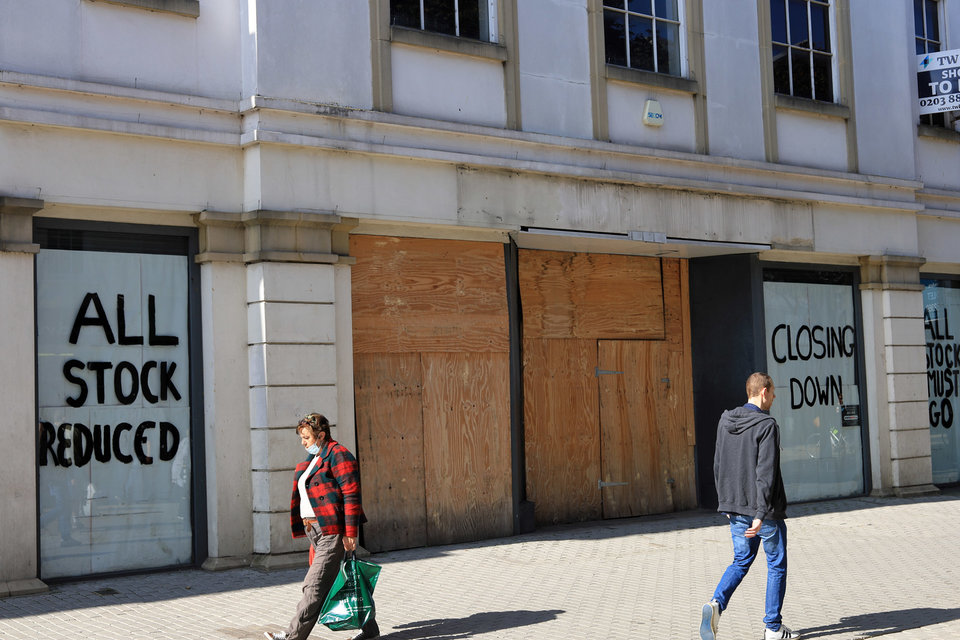Residential
Could retail conversions help meet housing demand?
The UK Government has proposed a reform to planning policy, which would make it easier to convert retail property into homes but has drawn criticism from the industry. Alex Love reviews the policy and asks whether retail conversions could help to solve the UK’s housing shortage.

It
has long been known that the UK is facing a housing shortage. More recently, the pandemic has increased the number of retail premises lying empty, intensifying what has been a turbulent decade for the high street.
To address both these issues, the UK Housing, Communities and Local Government Secretary Robert Jenrick has proposed new rules that to make it easier for developers to convert vacant shops and service units into housing in England. They are an extension of permitted development rights (PDR), clearing the way for commercial and retail premises to be turned into housing without a full planning application.
Supporters claim that this idea will help regenerate the high street and speed up what is considered to be a slow planning approval process. However, critics argue that the changes could create far more problems than they solve.
These concerns have prompted a diverse collective of 27 industry bodies to write to Jenrick urging a rethink of the proposed policy. Written by the British Property Federation (BPF), the letter has been signed by organisations including the Royal Institute of British Architects (RIBA), the Royal Institution of Chartered Surveyors, and the National Federation of Independent Retailers.
“The circumstances of our high streets are concerning, but simply creating a free-for-all is not the answer,” explains Ian Fletcher, BPF director of real estate policy. “It's not a huge contribution to housing supply. And I do wonder whether the small contribution that you get is worth all the downsides.”
What the new rules would mean
The UK Government revealed a net loss of 5,350 retail units from English town centres between June 2019 and June 2020, using these figures to justify the new PDR. Yet this is a drop in the ocean against England’s estimated housing shortage of 345,000 homes a year.
While the new PDR alone won’t solve these problems, the government believes it is part of the solution. It points out that 60,000 homes have been converted from offices and other business premises in the past four years.
The new PDR would entitle units in Class E – covering commercial, business and service use – to be converted to residential use in Class C3. Class E originally included banks, shops and restaurants, but has since been expanded to also cover day nurseries, gyms, and medical practices. Building use can also switch without permission from the local authority.
The thinking behind this is that it will allow a greater diversity of businesses in town centres. Yet under the new PDR, buildings in Class E could potentially be knocked down and turned into housing without a full planning application.
Developers would just have to communicate plans to the council and obtain ‘prior approval’. This allows the developers to effectively bypass the traditional approval process from the local authority, as permission is given from secretary of state. And unlike applications submitted to the council, there is no requirement for the developer to include any affordable housing.
The problem with permitted development rights, specifically the one that's proposed, is that it takes no account of locational context
There are concerns about exactly how the location of these new developments will fit in with existing town plans and infrastructure. And with local councils struggling for funding, there is also the issue of the loss of business rates that would come with converting business properties into homes, as the council tax paid by new residents would be lower. On top of this, many doubt the new properties will bring vital footfall to the area that shops would.
“The problem with permitted development rights, specifically the one that's proposed, is that it takes no account of locational context,” says Fletcher. “So in a scene with existing office to residential conversions, you get your housing in the middle of office parks with no public transport, no local services; and that's an inappropriate location.”
“Similarly, with this permitted development rights, you would end up breaking up retail frontages, potentially. That lifeline that we've all got used to over lockdown, which is the local convenience store, could be taken out and redeveloped for housing.
“I'm not against the repurposing of our high street, clearly that is going to happen. And I'm not against having more residential in town centres. But it has to be done in a planned way. Otherwise, you get all the adverse consequences.”

UK policymakers believe the conversion of empty shops into homes could help revive local high streets.
Regulating size and quality of redeveloped properties
There is also concern about the size of properties being built. A report by the Ministry of Housing, Communities and Local Government – headed by Jenrick – assessed PDR properties converted from 2015 to 2018. It found that 22.1% of properties failed to meet nationally described space standards (NDSS).
Properties included 16m2 studio flats that lacked windows. In contrast, 73.4% of properties that went through the full planning permission process met the NDSS.
However, the government responded and announced in September 2020 that all new homes built under the scheme would have to meet the NDSS. For a one-bedroom flat with shower room, the minimum floorspace would be 37m², or 39m² with a bathroom.
These measures have been introduced to stop what the government says is ‘a minority of developers’ providing smaller homes, and follow other changes introduced last year that require developments to feature “adequate natural light”.
We urgently need well-designed, mixed-use developments that provide long-term value for their communities and residents, delivered by sufficiently resourced local authorities – not a race to the bottom.
In spite of the changes, the industry remains dissatisfied with the standard of properties delivered.
“We represent housing developers, particularly those investing in build-to-rent. For the long-term interest in their investments, they want quality places; and we feel this is not going to deliver quality places,” says Fletcher. “Permitted development rights can be done very well. I've seen very good permitted development rights and conversions, from offices to residential. Equally, you'll have seen some of the bad examples.
“Often it's delivering quite a poor-quality product, and we slightly fear that. Ultimately, poor development affects all developments. The next time somebody with a filled-out planning application rocks up at the local planning committee, then locals are against the development because of the experiences they've had.”
Similar views are shared by RIBA president Alan Jones.
“Despite requirements to ensure minimum space and light standards, I have significant concerns about the safety, quality and sustainability of homes that could be delivered under permitted development rights,” says Jones. “We urgently need well-designed, mixed-use developments that provide long-term value for their communities and residents, delivered by sufficiently resourced local authorities – not a race to the bottom.”
On 28 January, the government ended its consultation for the latest PDR changes and is currently reviewing feedback. Changes could be introduced by August without the need for primary legislation, and would also be applicable for conservation areas.
The MHCLG highlights that all conversions still need to meet building regulations such as fire safety, irrespective of how planning permission is obtained. And it maintains that the plans will help the high street, with local residents still having the opportunity to comment on applications.
“The High Street Homes permitted development right will support the diversification of our high streets and town centres by allowing more flexibility for much-needed housing, while making the most of existing buildings,” says an MHCLG spokesperson.
However, given Jenrick’s previous revisions of the scheme, it is possible that more amendments will follow.
Main image: Boarded up shops on a UK high street during the Cocvid-19 pandemic. Credit: Donna Gibbs | Shutterstock.com